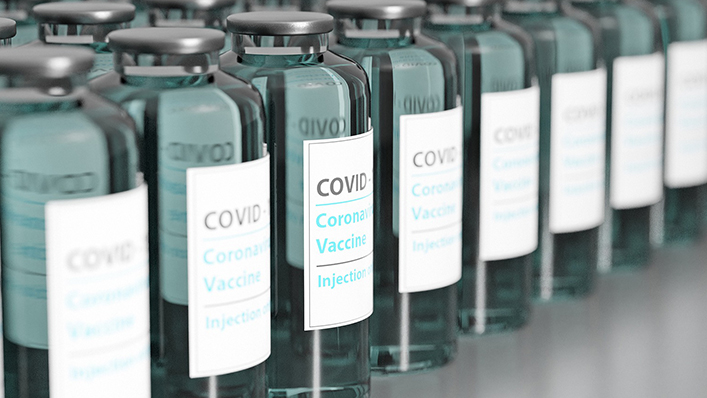
In the short amount of time since it was made public, the Ministerial Decision on TRIPS (“Decision”) has received a fair amount of criticism (for instance see here, here and here) for being a compromise.. Though there are optimists who have decided to look at the silver lining and have lauded the compromise as a victory for multilateralism, for many it’s simply not good enough to address the shortage of COVID-19 treatment. However, with the Decision now in picture, the next probable challenge for the Members… nay eligible Members is to make use of it and ensure that it serves the purpose for which it was actually devised. For this post I shall restrict my assessment to the ease with which an eligible Member can export the vaccine to other eligible Members.
Step one: Qualify as an Eligible Member– In order to use the provisions of the Decision, a Member must qualify as an ‘eligible’ Member. This requirement is mandated in Para. 1 of the Decision read with Footnote 1 which also defines that for the purpose of this decision, all developing country Members are eligible Members. For a quick background, WTO follows a pretty simple method of classification whereby a Member has to declare itself as a Developing or Developed country. Once made, this declaration defines the status of the Members, which can be challenged by other Members regarding the former’s eligibility to avail benefits accorded to them under different Agreements.
The Decision’s definition of eligible Member comes with an “opt out” clause whereby any Member with capacity to manufacture COVID-19 vaccines are “encouraged” to make binding commitment to not use the provisions of this Decision. Interestingly, this clause was specifically added to address the needs of China, which despite being a Developing Member opted to sit out of this Decision and wanted to imbibe a mechanism for similar Members. This understanding is surmised on the basis of China’s declaration here and specific reference of the same in Footnote no.1 of the Decision.
Step two: Implementing the Decision– According to Para. 2 of the Decision, an eligible Member can use this Decision via executive orders, emergency decrees, government use authorizations, and judicial or administrative orders. Such use is independent of the Compulsory License regime which the eligible Member may have in place. Thus it is noteworthy that the Decision can be used without any amendments to an eligible Member’s legal system, incorporating new formalities. This definitely is a step up from the previous amendment which inserted Article 31bis and its complicated compulsory license mechanism. The mechanism which is envisaged under Article 31bis required the Members to undergo multiple formalities like seeking a permission from the exporting country and then subsequently the recipient one. Apart from this there were other complications pertaining to notifications, etc which have been succinctly described here at page 22.
Step three: Export of vaccines– Para 3.2 of the Decision empowers an eligible Member to export the COVID-19 vaccines to other eligible Members. This can be done in three ways: a) through one eligible Member to another eligible Member; b) through joint initiatives which ensure the equitable access of eligible Members to the COVID-19 vaccine covered by the authorization; or c) through re-export i.e. from one eligible Member to another and then to another, when it is for humanitarian and non profit purposes.
However, the Decision is silent on initial formalities through which these transfers can take place.
One way to go about it is that an Applicant approaches the eligible Member government to grant a compulsory license, using the Decision, to export the vaccines to another eligible Member. Another way is that the government of the eligible Member acquires the vaccines at prices agreed after paying heed to humanitarian and non profit grounds and using the power to direct for an unauthorized use under this Decision as a bargain. The third way is that the Government invites applications for applicants with relevant infrastructure and upon satisfaction, grants the approval for manufacturing the vaccines. And finally the fourth way is that an eligible Member imports it from one eligible Member and re- exports it to another.
Ordinarily the Decision imposes an obligation on the eligible Member to take all reasonable steps to prevent re-exports of the vaccines from its territory. However in exceptional circumstances an eligible Member may re-export under humanitarian or not for profit purposes, which in my opinion renders the restriction infructuous since the Chapeau of the Decision itself clarifies that the it came into being considering the “exceptional circumstances” of the COVID-19 pandemic.
Furthermore, one lurking obligation which the eligible Members have to undertake is that of proper labelling (specifying the purpose of the vaccine) and record keeping by their respective custom authorities of the product produced. This becomes essentially important considering the next step.
Step four: Fulfill the procedural requirements: Procedural requirement mentioned under Footnote 5 of the Decision expects the eligible Member to notify the TRIPS Council of any measure taken by it implementing this Decision and specify the products for which the authorization has been granted. Now the requirement of notifying the WTO of one’s trade restrictive measure is nothing new. It’s a formality which has been enshrined in other Agreements too. For instance, the Agreement on Safeguards, which justifies and regulates a Member’s decision to impose a Safeguard measure to curb a sudden hike in imports does require a Member to notify the Safeguards Committee under Article 13. In fact TRIPS too under Article 63.2 requires the Members to notify Council for TRIPS of “laws and regulations, and final judicial decisions and administrative rulings of general application, made effective by a Member pertaining to the availability, scope, acquisition, enforcement and prevention of the abuse of intellectual property rights”.
Under Footnote 5 an eligible Member who makes use of the Decision in any manner must communicate to the TRIPS council any measure regarding use of the decision. This could be notification of any procurement, court order, administrative order etc. In case of an authorization, the eligible Member must specify name and address of the authorized entity, the product(s) for which the authorization has been granted and the duration of the authorization. Furthermore, the quantity(ies) for which the authorization has been granted and the country(ies) to which the product(s) is(are) to be supplied shall be notified as soon as possible after the information is available.
It is noteworthy that this provision does not mandate a time limit and instead states “as soon as possible” giving the relevant Member the flexibility to first use the measure, then collate relevant information and then notify.
Assessment
Thus considering the language of the Decision, the eligible Members are given multiple leeways like no specific time constraint to notify the TRIPS Council, immunity of compliant uses from impairment and nullification provisions of the GATT, exceptional circumstances to re-export vaccines, along with the major flexibilities of provision to export and plethora of modes to use the mechanism.
However, by restricting the scope of the product covered under it to just patents and just vaccines and effectively putting the burden of export on few Members like India, this Decision shoots itself in the foot. Despite being flexible enough on certain terms, it is just not palatable against the demands for a sincere solution to lack of access to COVID-19 treatments. Not just the Decision extremely short sighted by restricting the scope to only patents on vaccines and leaving out other IPs and treatments, it is very developing country Members specific and is restrictive on roping in new members.
The shortcoming of this method is that once a Member abandons ship, it cannot hop back in and the “binding” nature of the exit commitment ensures that. Conversely, there is no “opt-in” mechanism to accommodate Developed country Members who may have a change of heart later.
Effectively, this definition limits the number of Members with actual potential to manufacture COVID-19 vaccine drastically. According to a report by WIPO, almost 84 percent of the applications for COVID-19 vaccine patent families are filed in patent offices of China, WIPO (using the PCT), United States. Of these, applications belonging to 274 patent families were made in China and 96 in the USA. This means that these countries with a high number of patent applications on COVID-19 vaccines cannot avail the benefits of the Decision since they either don’t qualify to be an eligible Member or they have opted out from participating in it. In fact according to this list, the only eligible Member where applications have been made under 6 patent families, is India. Thus, limiting the number of eligible Members to only a handful of Members and placing the burden to make good of this Decision completely on them. It’s relevant to note here how few countries used any of the Compulsory Licensing mechanisms that were already available to them under TRIPS in the last 2 years, as evident from this list.
Furthermore, as pointed out above, the earlier amendment to TRIPS which was inserted to cater the need of accessibility to medicines in Members with no infrastructure to manufacture sophisticated drugs, was not sufficient to timely address their concerns. While this Decision does relax some of those complications, it is restricted to only “exceptional circumstances of COVID-19.” The Draft Ministerial Declaration on the WTO Response to the COVID-19 Pandemic and Preparedness for Future Pandemics under Para. 23 did ‘affirm the need to build effective solutions in case of future pandemics including on intellectual properties.” And this affirmation could have very well been reflected in this Decision by inculcating a broader scope for the products and participants covered therein and also on its application across the board for future pandemics.
(Views expressed here are personal)



